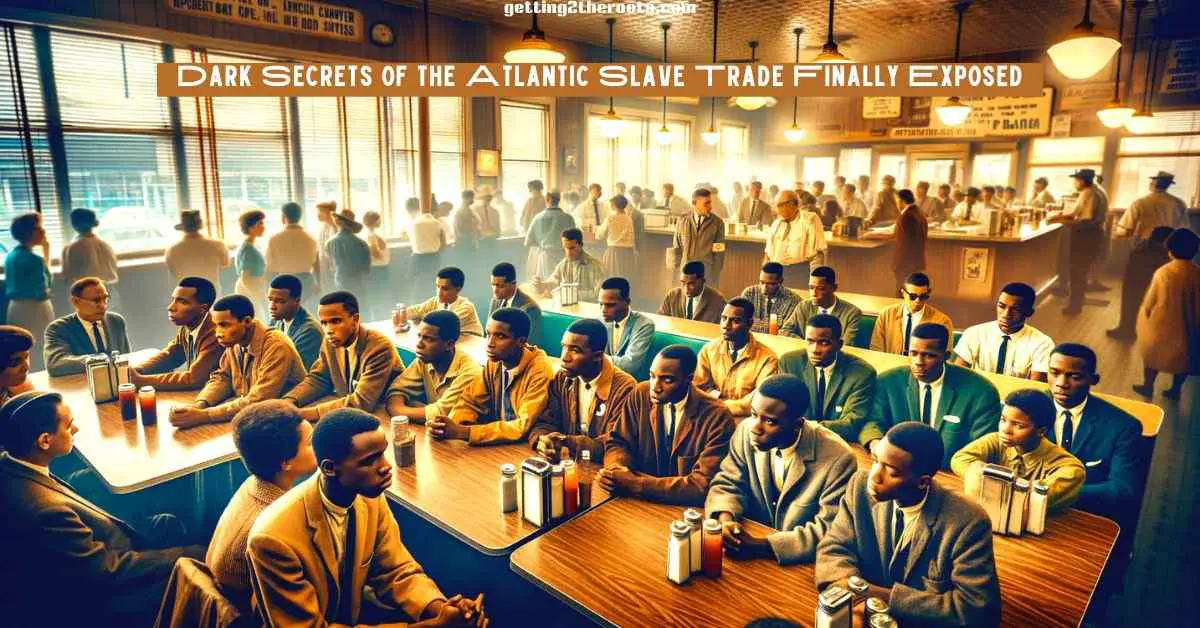The Atlantic Slave Trade, a pivotal episode in human history, spanned from the 16th to the 19th centuries.
This transatlantic voyage involved the forcible abduction and transportation of millions of Africans to the Americas.
This article explores the origins and mechanics of the trade, delving into its deep-seated impacts.
Consequently, it highlights the significant role trade played in shaping the modern world.
Discover the hidden history of enslaved life in Covington, Smith, and Jones Counties. Explore their stories and experiences by [Clicking Here].
Explore the fascinating history of the early 1700s and 1800s with us on YouTube as we delve into uncovering this significant chapter of our shared heritage. [Click Here].
How Did the Atlantic Slave Trade Shape Our World?
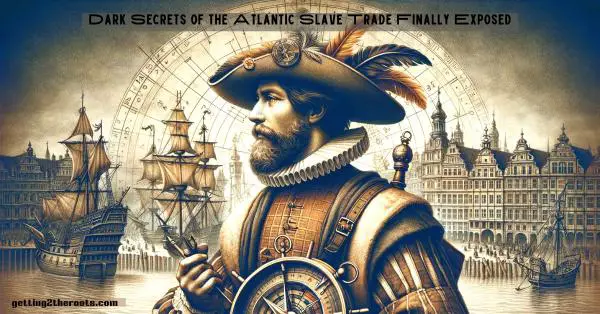
Understanding the Beginnings: The Origins of the Atlantic Slave Trade
The Atlantic Slave Trade commenced in response to the critical demand for labor in the rapidly expanding New World colonies.
This need led to the establishment of a significant trade system. This system marked a pivotal chapter in global history.
As a result, a complex trade system emerged, profoundly influencing the course of international relations and economies.
This system’s inception marked the beginning of a historical era with far-reaching and enduring impacts.
Moreover, this demand catalyzed the beginning of a profoundly impactful historical period.
This quest began with European colonizers’ attempts to enslave Indigenous peoples of the Americas. However, they encountered insurmountable challenges.
Devastating diseases brought over from Europe wreaked havoc on native populations, drastically reducing their numbers.
This decimation undermined the feasibility of employing these populations as a labor force.
Additionally, the Indigenous peoples’ fierce resistance against European domination posed a significant obstacle.
These factors, combined, made the enslavement of native populations increasingly impractical and unsustainable for the colonizers.
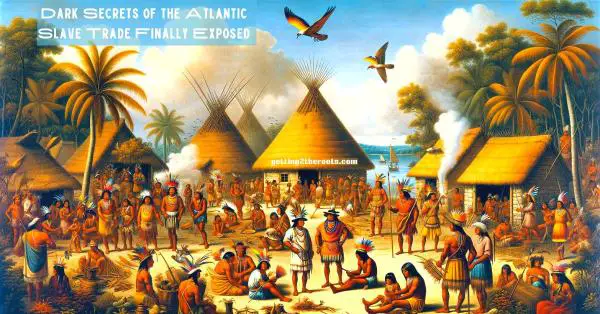
The Shift to Africa: The Dawn of a Dark Era in the Atlantic Slave Trade
Faced with labor shortages and driven by the relentless pursuit of economic growth, European colonizers shifted their focus across the Atlantic to Africa.
This change marked the beginning of a new, more horrifying chapter.
The 16th century saw Portugal take the lead in this ominous trade, employing their maritime prowess to transport African individuals across the ocean.
Other European powers, such as Spain, Britain, and France, quickly followed, each eager to partake in and capitalize on the burgeoning trade.
These countries laid the groundwork thanks to their imperialistic aspirations and a constant need for labor in New World agriculture and mining.
Subsequently, their actions precipitated what would unfold as one of the most tragic episodes in human history.
Initiating the Atlantic Slave Trade set off a chain of events that profoundly affected millions of lives.
Also, it reshaped socio-economic and political landscapes across continents, significantly altering history’s trajectory.
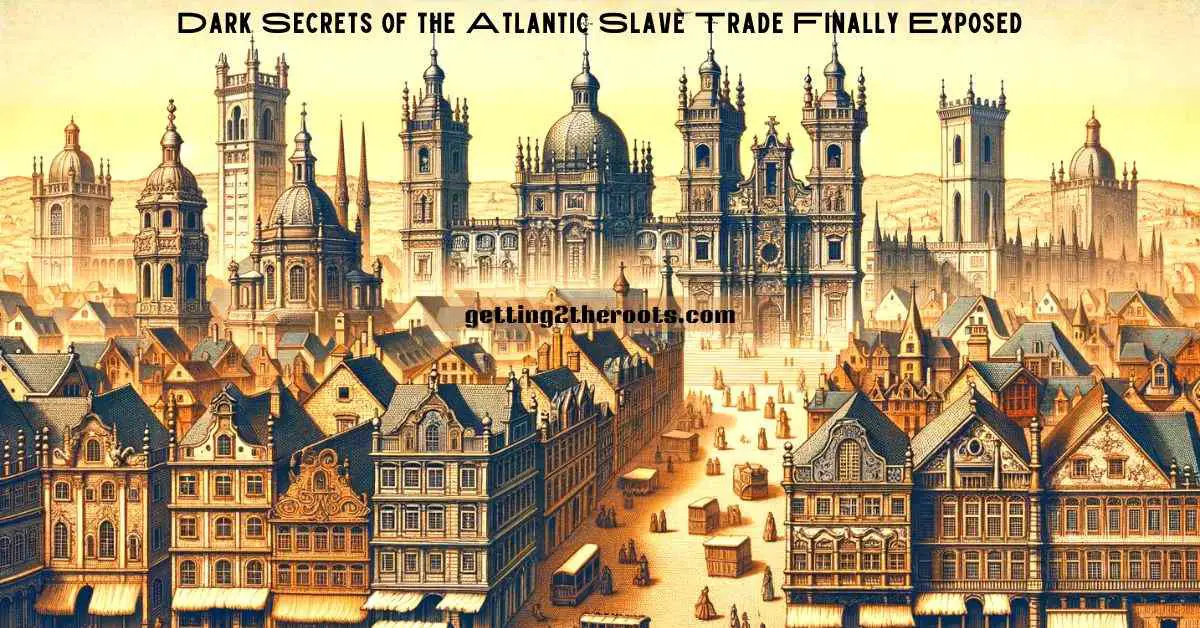
Expansion of the Trade: Europe’s Intensifying Role in the Atlantic Slave Trade
The transition to the Atlantic Slave Trade was not merely a shift in the source of labor; it represented a drastic change in the scale and intensity of exploitation.
As European powers like Portugal, Spain, Britain, and France became increasingly involved, the trade quickly escalated from a regional practice to a global enterprise.
Portugal’s Pioneering Role and Expansion by Other European Nations
Portugal, leveraging its advanced maritime technology, played a pivotal role in establishing the routes and methods that would define the slave trade.
Their initial voyages across the Atlantic set a precedent, soon followed by other European nations.
The involvement of Spain, Britain, and France, each driven by a blend of economic ambition and imperialistic desire, accelerated the expansion of the trade.
These countries’ participation not only intensified the trade but also broadened its geographic reach, making it a central element of global commerce.

The Transformation of Labor and the Emergence of Plantation Economies
This shift toward enslaving Africans fundamentally transformed labor practices in the New World.
The European colonizers’ insatiable demand for labor, especially in agriculture and mining, catalyzed the development of plantation economies.
These economies relied heavily on the labor of the enslaved, and consequently, the influx of Africans supplied the necessary workforce to maintain and expand these enterprises.
As a result, the continuous importation of slaves from Africa supported the plantation system, which became a pillar of economic growth in the New World.
Socio-Economic and Political Impacts Across Continents
The inception and expansion of the Atlantic Slave Trade had far-reaching socio-economic and political implications.
Moreover, it altered the demographic landscapes of Africa and the Americas, leading to significant population shifts and new cultural and social dynamics.
In Africa, the trade resulted in the destabilization of societies and economies as the constant removal of individuals tore apart the social fabric.
In the Americas, it led to the creation of racially stratified societies, with lasting implications for racial relations and social structures.
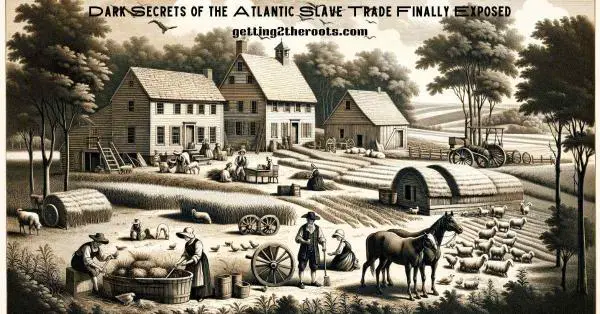
A Tragic Chapter with Enduring Consequences
The Atlantic Slave Trade stands as one of the most tragic episodes in human history.
Its commencement in the 16th century marked the beginning of a period of intense human suffering and exploitation.
The trade’s role in shaping the modern world is undeniable, with its effects still visible in various forms today.
Understanding this dark chapter is crucial for comprehending the historical contexts of contemporary global issues and the persistent challenges in addressing racial and socio-economic disparities.
The Triangular Trade Route: A Closer Look at the Mechanics of the Atlantic Slave Trade
The complex, triangular trade route of the Atlantic Slave Trade interconnected three continents, underpinning the trade.
This route created a relentless cycle of commerce and exploitation, spanning across these continents.
This system played a pivotal role in sustaining the slave trade and reshaping the economies of the involved regions.
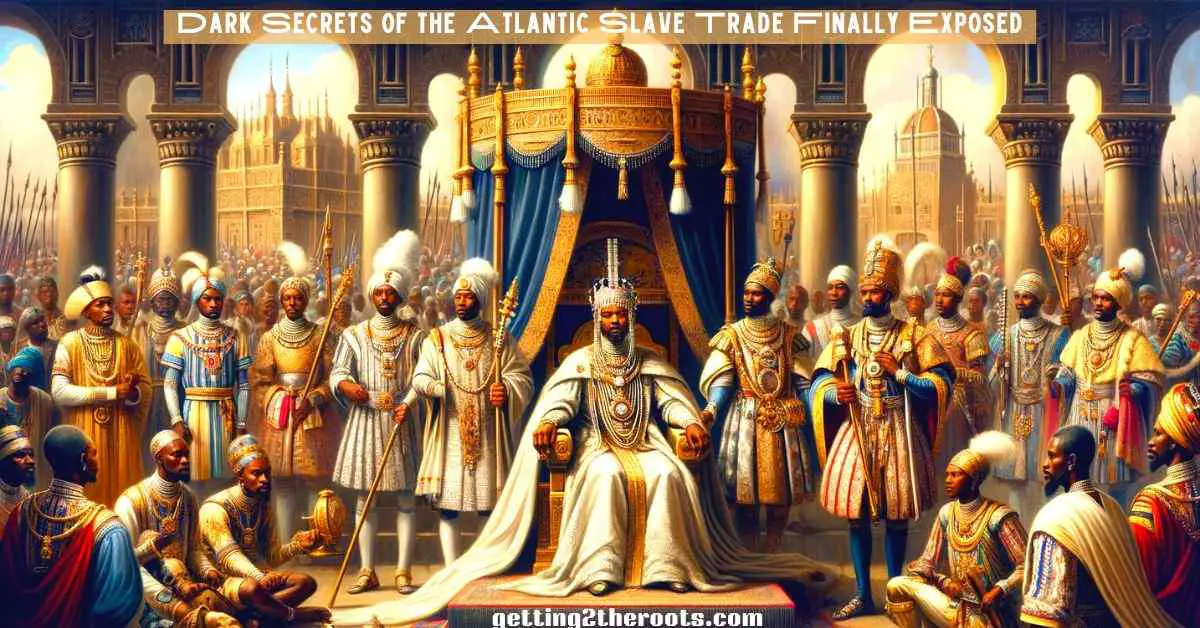
The First Leg: From Europe to Africa
The first leg of this triangular route began in Europe, where they loaded ships with manufactured goods, including firearms, textiles, and alcohol.
These goods, destined for African markets, marked the commencement of a complex trade journey.
Upon reaching Africa, traders actively engaged in bartering European goods, such as firearms, textiles, and alcohol, for humans.
This process involved complex negotiations with African leaders and traders who were integral to the slave trade network.
These exchanges marked a crucial phase in the triangular trade route, linking Europe, Africa, and the Americas.
This exchange marked the beginning of a journey filled with suffering and injustice for countless Africans.

The Middle Passage: A Journey of Suffering Across the Atlantic
The second leg, known as the ‘Middle Passage’, was the most infamous and brutal part of the journey.
Africans underwent transportation across the Atlantic Ocean under deplorable conditions.
Packed tightly into ships, they faced unimaginable horrors, including disease, starvation, and abuse.
The Middle Passage was a glaring symbol of the inhumanity of the Atlantic Slave Trade, with a high mortality rate due to the harsh conditions on board.
The Final Leg: From the Americas to Europe
Upon arrival in the Americas, Africans were sold in slave markets. The profits from these sales were substantial, fueling the economies of many European nations.
Then, traders used these funds to purchase colonial goods such as sugar, cotton, tobacco, and rum, all products of the labor of enslaved people.
The ships laden with these goods would set sail for Europe, completing the triangular route.
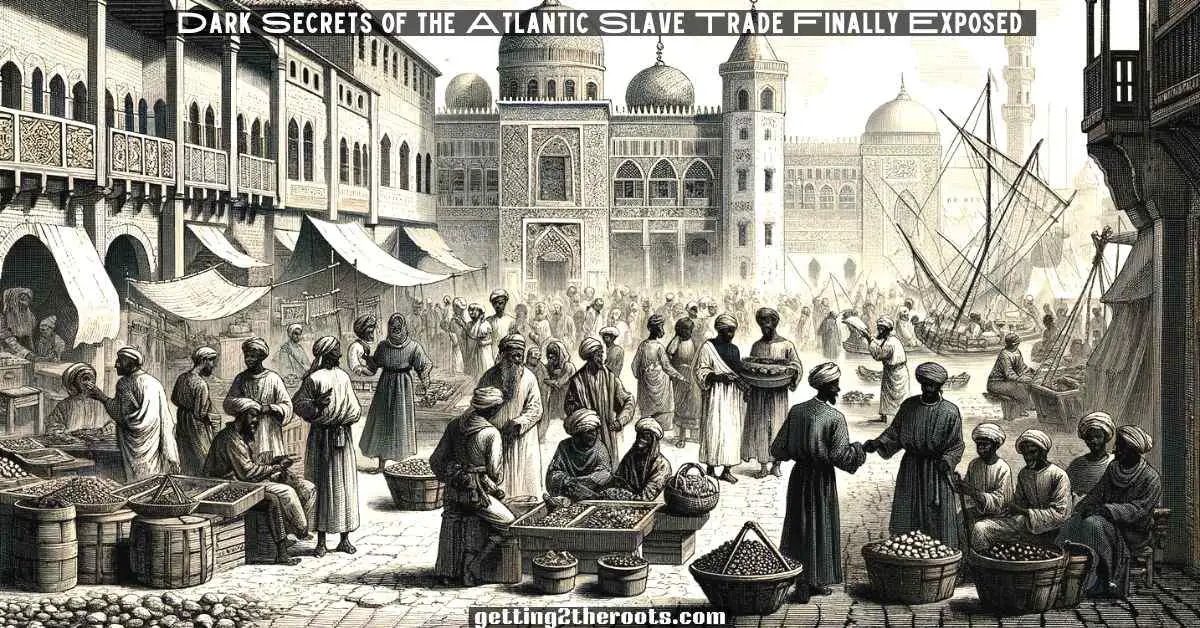
The Economic Impact of Trade on Europe and the Americas
The trade route was not just a logistical framework; it was a driving force behind the economic growth of European nations and the development of the New World.
The importation of Africans provided the labor force necessary for the burgeoning plantation economies in the Americas.
This, coupled with the export of colonial goods to Europe, greatly enriched European economies and fueled their expansion.
Understanding the Complex Dynamics of the Slave Trade
By examining the mechanics of the Atlantic Slave Trade, we gain insight into the economic and logistical foundations that enabled this dark period in history.
The triangular trade route was a crucial component of this system, facilitating the relentless cycle of human trafficking and exploitation.
Understanding these mechanics is essential for comprehending the full scope and impact of the slave trade on global history.
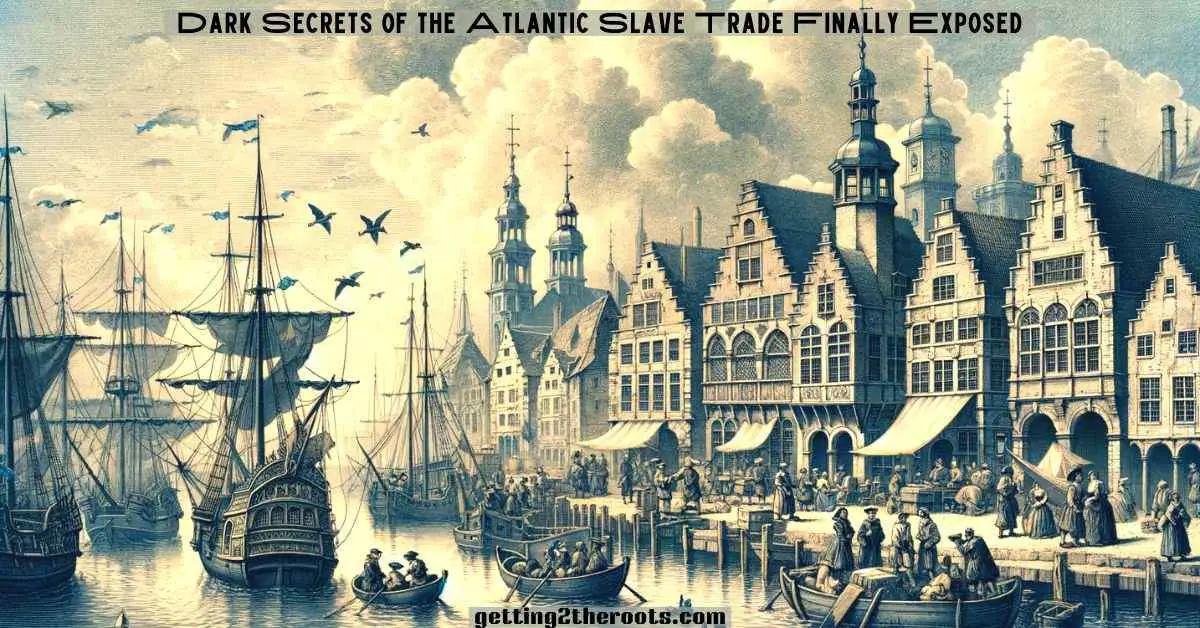
The Horrors of the Middle Passage: A Deeper Look into the Atlantic Slave Trade
Building upon the established understanding of the Atlantic Slave Trade, the Middle Passage stands out as its most horrific aspect.
This part of the journey involved the forcible transportation of millions of Africans across the Atlantic, a voyage that epitomized the cruelty and inhumanity of the entire trade.
The Unthinkable Conditions of the Middle Passage
During the Middle Passage, slave ships subjected Africans to unimaginable conditions.
They were packed tightly, with little room to move, in unsanitary and oppressive environments.
In these conditions, disease spread rapidly, and starvation became common due to the inadequate provision of food and water.
The mortality rate was alarmingly high, with many not surviving the journey.

Beyond Physical Suffering: The Psychological Impact
The Africans not only endured physical torment but also experienced the compounded psychological trauma of being forcibly uprooted from their homes and communities.
The dehumanization they experienced was profound, with their identities and humanity stripped away as they were reduced to mere commodities.
This psychological trauma had long-lasting effects, extending far beyond the journey itself and affecting generations to come.
The Role of the Middle Passage in the Broader Context of the Trade
The Middle Passage was not an isolated atrocity but a central component of the Atlantic Slave Trade.
It was a pivotal stage in the triangular trade route, connecting the demand for labor in the Americas with the supply of Africans.
The inhuman conditions of the Middle Passage were a direct result of the economic motivations driving the trade, reflecting the disregard for human life in pursuit of profit.
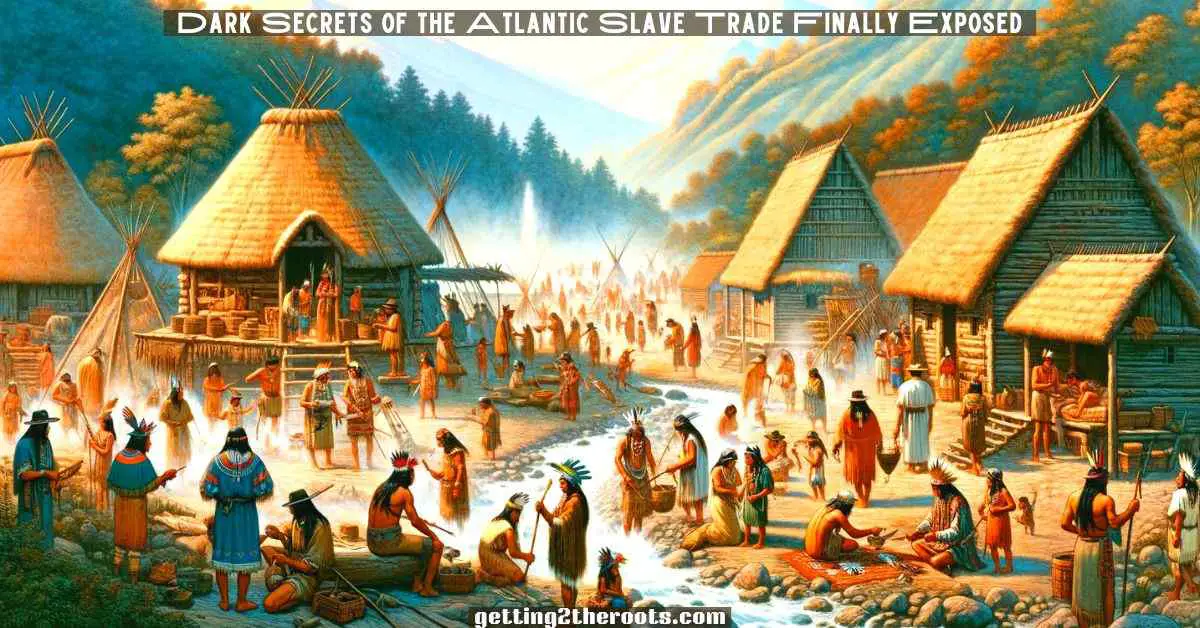
The Enduring Legacy of the Middle Passage
The legacy of the Middle Passage is a somber reminder of the darkest aspects of human history.
It serves as a stark illustration of the extent of human cruelty and the capacity for suffering.
The impact of this journey resonates through history, affecting the descendants of those who endured it and shaping the discourse on race, human rights, and justice.
Reflecting on the Significance of the Middle Passage
In understanding the Atlantic Slave Trade, the Middle Passage is a critical element that underscores the trade’s brutality.
Its investigation reveals not only the suffering that millions of people experienced physically and emotionally but also the wider effects of this troubling time in history.
Reflecting on the Middle Passage allows for a deeper comprehension of the trade’s impact on the world and its lasting legacy.

Far-Reaching Effects of the Atlantic Slave Trade on Africa
The Atlantic Slave Trade had a profound and multifaceted impact on the African continent.
Moreover, its effects extended beyond the immediate horrors of the trade itself, leading to long-term socio-economic and political disruptions.
The Devastation of African Societies and Economies
The slave trade led to widespread depopulation in many African regions, particularly those that were heavily targeted for raiding.
As a result, this loss of population had a cascading effect, undermining the social structures and economic foundations of these societies.
Communities were torn apart, with the young and able-bodied forcibly removed, leaving behind a demographic imbalance that hindered societal progress and growth.
The Proliferation of Violence and Warfare
Thus, the demand for enslaving individuals sparked inter-tribal conflicts and wars, leading African groups to raid neighboring communities.
These raids targeted the capture of individuals to be sold into slavery. This escalation of violence and warfare had a destabilizing effect on the region.
It undermined traditional governance structures and exacerbated tensions, leading to a cycle of conflict that was difficult to break.

Stunted Economic Development
The focus on the slave trade stunted the development of other industries in Africa.
Due to the lucrative nature of the slave trade, many African leaders and traders prioritized this over other forms of economic development.
This resulted in a lack of diversification in African economies, leaving them heavily reliant on trade and vulnerable to its fluctuations.
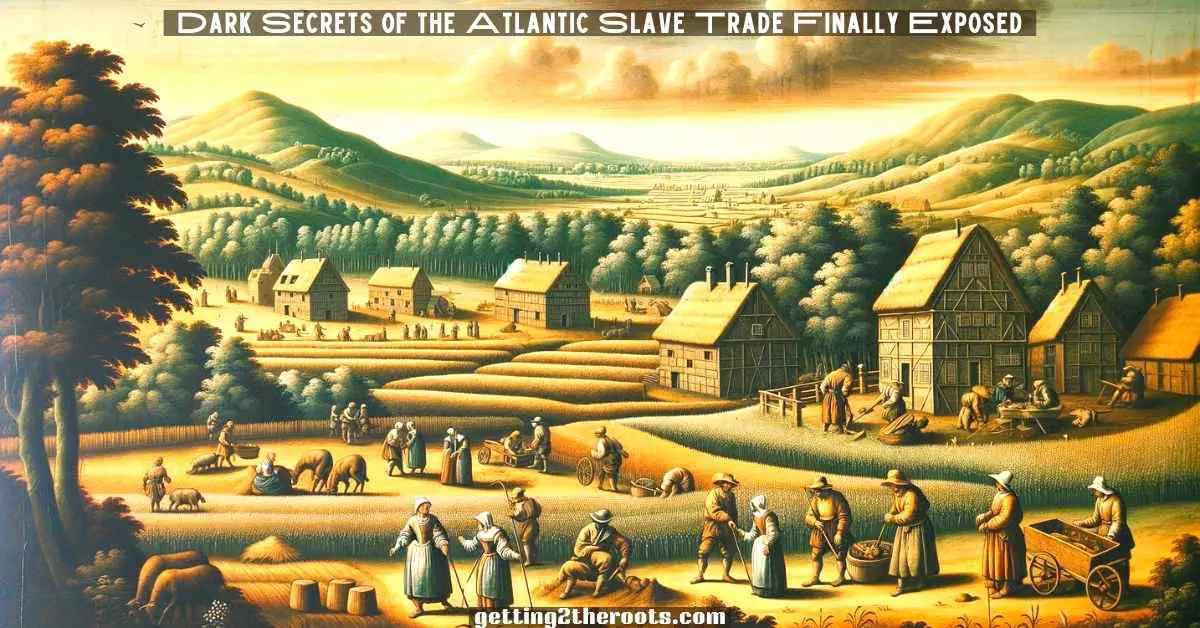
Cultural and Social Disruption
The impact of the Atlantic Slave Trade extended to the cultural and social fabric of African societies.
Hence, the removal of millions of individuals led to the loss of cultural knowledge, traditions, and languages.
This cultural erosion had long-lasting effects, as generations were uprooted from their ancestral heritage and knowledge systems.
A Legacy of Disruption and Pain
The legacy of the Atlantic Slave Trade in Africa is one of disruption and pain.
Its impact was not confined to the individuals who were enslaved but permeated through the very essence of African societies.
Understanding this impact is crucial in acknowledging the full scope of the trade’s consequences and in addressing the historical injustices that continue to affect the continent.
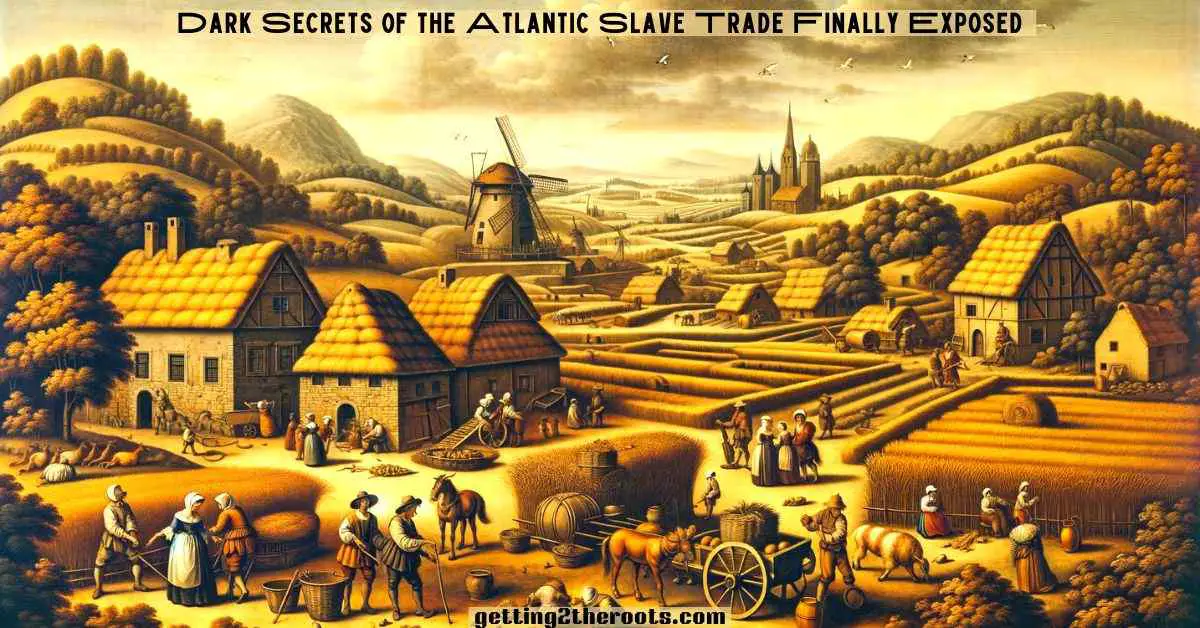
Deepening Impact of the Atlantic Slave Trade in the Americas
The Atlantic Slave Trade significantly shaped the socio-economic and cultural landscapes of the Americas.
The introduction of enslaving Africans was not just a demographic change; it was a transformation that had lasting implications.
Growth of Plantation Economies and Agricultural Development
The influx of Africans was a crucial factor in the expansion of plantation economies in the Americas.
The enslaved were primarily used in the cultivation of lucrative crops like sugar, tobacco, and cotton.
These plantations became the backbone of the colonial economies, particularly in regions like the Caribbean and the southern United States.
The reliance on slave labor for these plantations ensured high productivity and profitability, driving economic growth in these colonies.
Establishment of Racial Hierarchies and Systemic Discrimination
The Atlantic Slave Trade established a racial hierarchy that continued well beyond the abolition of slavery and remains evident in 2024.
The enslaved and their descendants were relegated to the lowest stratum of society, facing systemic racism and discrimination.
Furthermore, this racial stratification was ingrained in the societal structure, influencing laws, customs, and social norms.
The legacy of this hierarchy contributed to ongoing racial tensions and disparities, which continue to affect societies in the Americas.
Cultural Transformations and African Diaspora
The Africans brought a rich cultural heritage, which significantly influenced the culture of the Americas.
Despite the harsh conditions, African cultural practices, languages, and traditions found ways to survive and blend with the local cultures.
This cultural exchange led to the emergence of unique African-American cultures, enriching the diversity of the Americas.
Economic Dependency on Slave Labor
The economies of many American colonies became heavily dependent on slave labor.
This dependency not only affected the agricultural sector but also had a broader impact on economies, influencing trade patterns, investment priorities, and industrial development.
The abolition of slavery later posed significant economic challenges, requiring major adjustments to these economies.
A Lasting Legacy in the Americas
The impact of the Atlantic Slave Trade in the Americas was profound and multi-faceted.
Moreover, it played a crucial role in shaping the economic, social, and cultural dimensions of the New World.
Additionally, the enduring memory of the Atlantic Slave Trade serves as a stark reminder of humanity’s capacity for cruelty and injustice.
It is a testament to the resilience of those who were oppressed and their enduring struggle for freedom and equality.
This legacy continues to shape discussions on race, human rights, and social justice in the modern world.
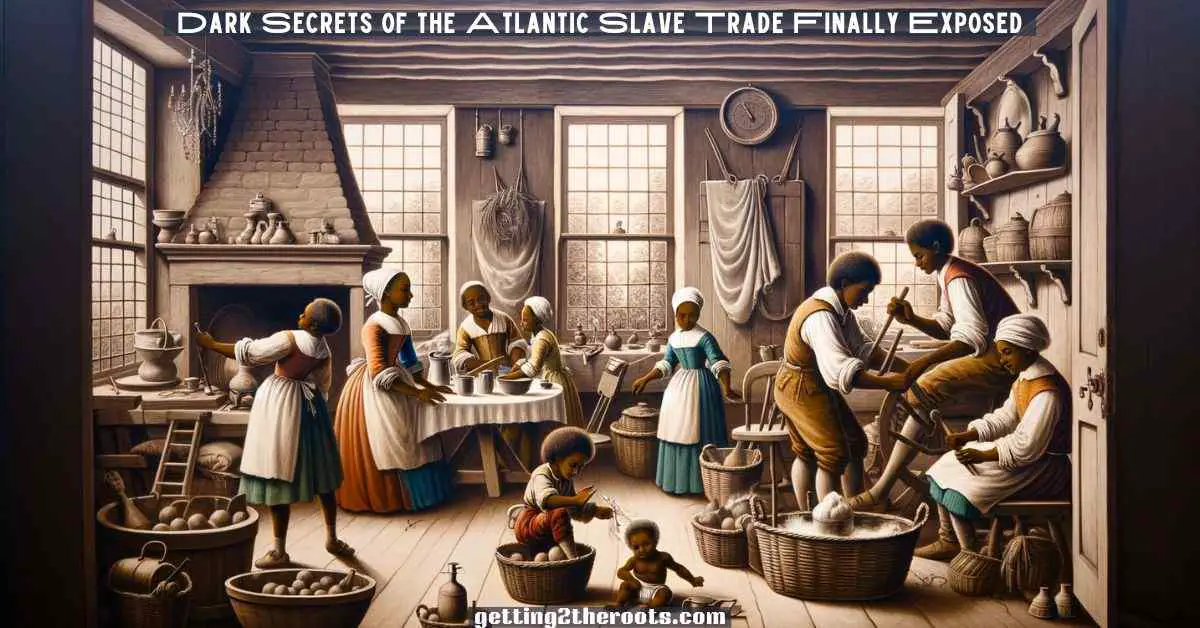
The Struggle for Freedom: Resistance and Abolition in the Atlantic Slave Trade
Resistance to the horrors of the Atlantic Slave Trade was a constant and powerful force, manifesting in various forms and ultimately leading to significant historical change.
Acts of Defiance and Organized Rebellion
Throughout the period of the slave trade, enslaved Africans and their descendants engaged in numerous acts of resistance.
From subtle forms of defiance, such as
- Work slowdowns and cultural preservation.
- Direct forms, like escape attempts.
- Organized rebellions.
- Enslaved individuals employed various strategies to resist their oppressors.
Such acts of resistance were crucial in undermining the institution of slavery and empowering the enslaved communities.
Emergence of Influential Figures and the Abolitionist Movement
The late 18th century witnessed the rise of influential figures in the fight against slavery.
Notable figures include Olaudah Equiano, who penned his harrowing experiences as an enslaved person, and Henry “Box” Brown.
Whoever ingeniously escaped slavery by mailing himself to freedom in a box emerged as a beacon of courage and resilience.
Equiano’s writings shed light on the inhumanity of the slave trade, while Brown’s daring escape captured the imagination of many.
These figures, among others, played pivotal roles in raising awareness and galvanizing support for the abolitionist cause.
Momentum of the Abolitionist Movement
A combination of moral, economic, and political factors helped the abolitionist movement gain significant momentum during this time.
Activists, both black and white, campaigned tirelessly, leading to a growing acknowledgment of the inhumanity of slavery.
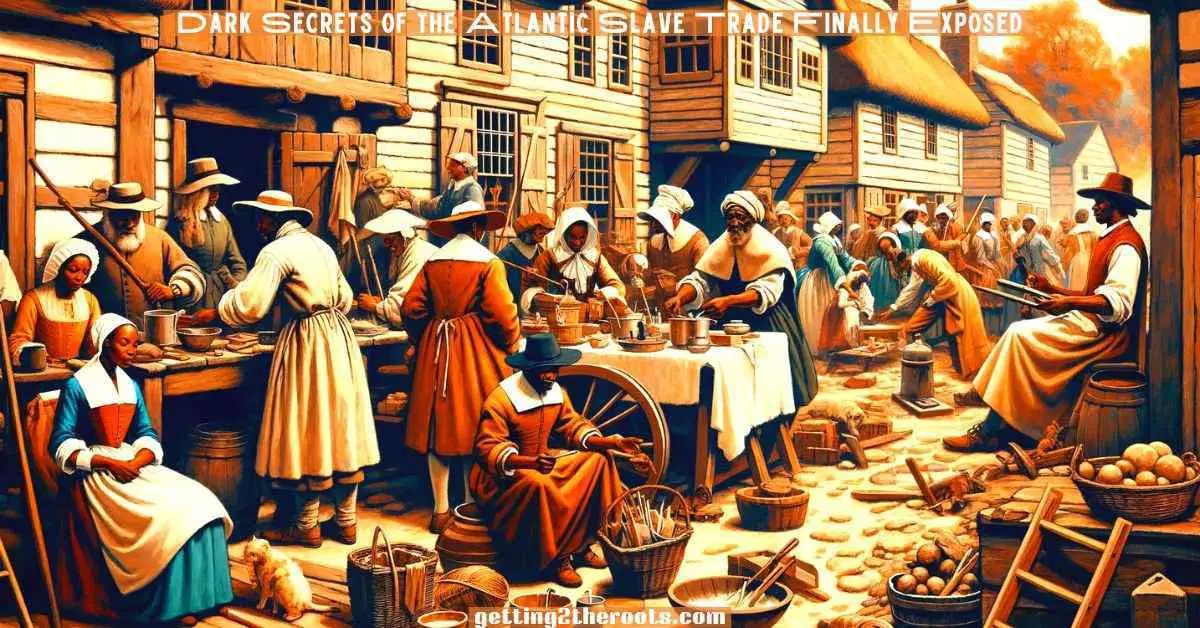
This movement, encompassing a wide range of societies and individuals, significantly influenced public opinion and political decisions.
Gradual Outlawing of the Slave Trade and Slavery
The persistent efforts of abolitionists eventually led to legislative changes.
Starting in the late 18th century and continuing into the 19th century, various countries began to outlaw the slave trade and, subsequently, slavery itself.
This process was gradual and often met with resistance, but it marked a significant shift in global attitudes towards slavery and human rights.
A Legacy of Resistance and Change
Hence, the resistance to slavery and the movement for its abolition are testaments to the enduring human spirit in the face of oppression.
The legacy of these struggles is evident in the ongoing fight against racial injustice and inequality.
And understanding the resistance and abolition efforts is crucial to comprehending the full scope of the Atlantic Slave Trade and its enduring impact on the world.
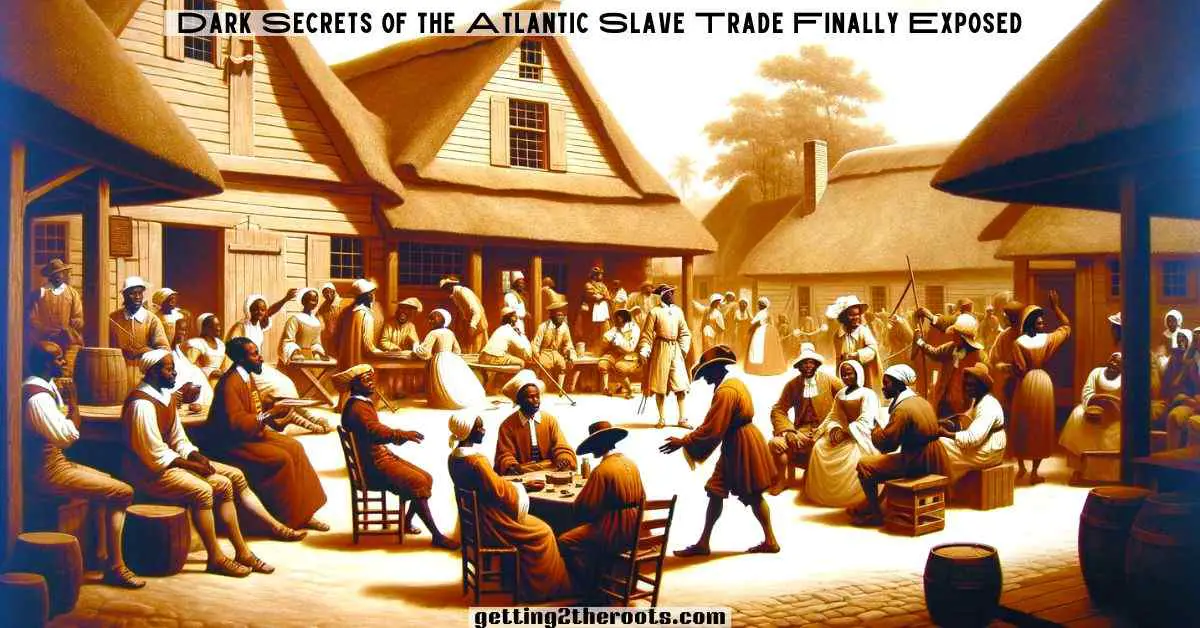
The Indelible Mark of the Atlantic Slave Trade
The Atlantic Slave Trade has left a profound and lasting legacy, deeply woven into the fabric of global history.
Its impacts are far-reaching, affecting various aspects of life in both the Old and New Worlds.
Demographic Transformations
One of the most visible legacies of the slave trade is the demographic change it brought about.
The forced migration of millions of Africans has significantly altered the population composition of the Americas and Europe.
This demographic shift has had lasting cultural and social impacts, contributing to the rich diversity of these regions while also posing challenges to racial integration and identity.
Cultural and Socio-Economic Patterns
The cultural impact of the slave trade is evident in the fusion of African, European, and indigenous cultures, particularly in the Americas.
This cultural blend has given rise to unique traditions, languages, and art forms.
Economically, the labor of enslaved Africans was a cornerstone in the development of the modern capitalist system, contributing significantly to the wealth of nations involved in the trade.
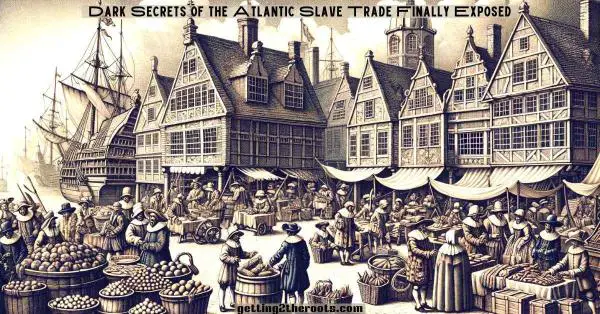
Modern Capitalist Development
The Atlantic Slave Trade played a crucial role in laying the foundations for the modern global economy.
The exploitation of slave labor facilitated the accumulation of capital, which was instrumental in the Industrial Revolution and the rise of modern capitalism.
This system, built on the exploitation of human beings, raises critical questions about the ethical and moral dimensions of economic practices.
Remembrance and Reflection
Today, the slave trade is remembered as a somber chapter in human history.
It not only serves as a reminder of humanity’s capacity for cruelty but also of the resilience and strength of the oppressed.
Memorials, museums, and educational programs worldwide continue to keep the memory of the slave trade alive, ensuring that the lessons learned are not forgotten.

Conclusion: The Lasting Echoes of the Atlantic Slave Trade
The Atlantic Slave Trade stands as a pivotal chapter in the annals of human history.
Its impacts, both devastating and transformative, continue to resonate across the globe.
Understanding this complex legacy is essential for addressing the historical injustices it has caused and for moving towards a more just and equitable world.
Frequently Asked Questions about the Atlantic Slave Trade
Q1: When did the Atlantic Slave Trade begin and end?
A1: The Atlantic Slave Trade began in the 16th century and continued until the 19th century, with its peak occurring between the 17th and 18th centuries.
Q2: How many Africans were forcibly taken to the Americas during the slave trade?
A2: It is estimated that about 12 million Africans were transported to the Americas during the Atlantic Slave Trade.
Q3: What were the main regions affected by the Atlantic Slave Trade?
A3: The trade majorly affected West and Central Africa, from where Africans were taken, and the Americas, particularly the Caribbean, Brazil, and the Southern United States, where they were enslaved.
Q4: What role did the Atlantic Slave Trade play in the global economy?
A4: The slave trade was fundamental to developing the modern capitalist system, contributing to the wealth of the nations involved and fueling the industrial revolution.
Q5: How is the legacy of the Atlantic Slave Trade being addressed today?
A5: The legacy is addressed through educational programs, memorials, and discussions on racial justice and reconciliation. These efforts aim to acknowledge historical injustices and foster a deeper understanding of the trade’s impacts.

